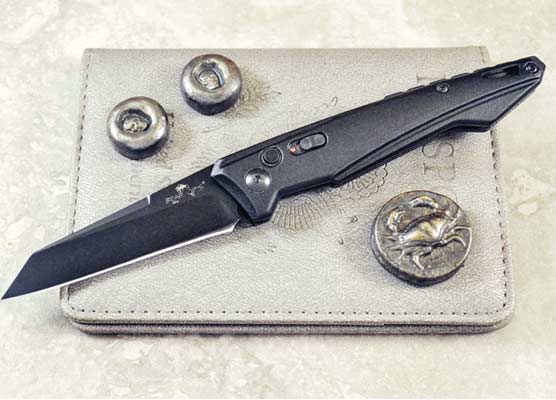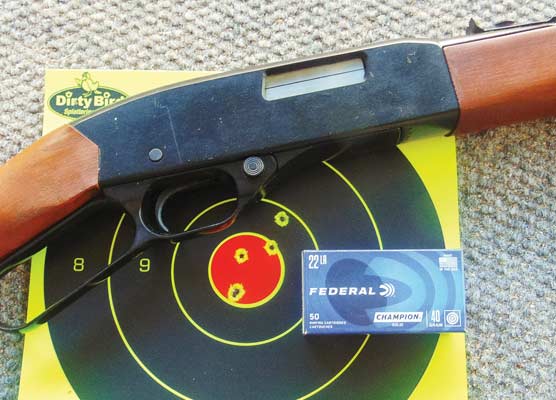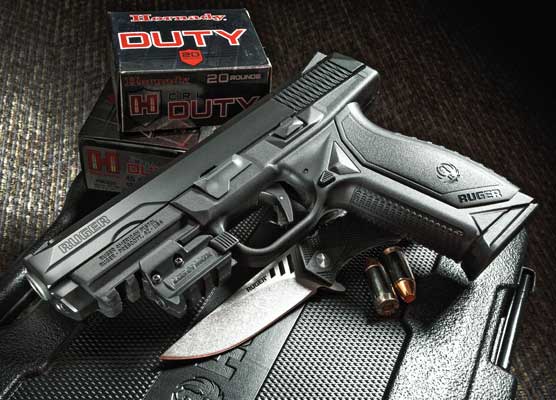Crossfire May 2018
GUNS Magazine® welcomes letters to the editor. We reserve the right to edit all published letters for clarity and length. Due to the volume of mail, we are unable to individually answer your letters or e-mail. In sending a letter to GUNS Magazine, you agree to provide Publisher’s Development Corp. such copyright as is required for publishing and redistributing the contents of your letter in any format. Send your letters to Crossfire, GUNS Magazine, 12345 World Trade Dr., San Diego, CA 92128; [email protected]
A Cautionary Note
Enjoyed Holt Bodinson’s article “A Shotgun In Your Holster.” He mentions he likes to carry one shotshell in his revolver while in the field.
I also put one shotshell in my all-steel .38 Special snubnose. I learned the hard way to make sure the shotshell is the first round up. Carrying the shotshell as the last round—which Mr. Bodinson prefers—is inviting the plastic shot cup to move forward in its case under recoil and lock up the cylinder.
Where I live in Oklahoma, snakes are the most likely varmints to be seen. If I should need a +P hollowpoint, I’ve got two choices. Either fire the shotshell to dispose of it or take the time to remove it. Both are better than a locked cylinder at a bad moment.
Robert W. Whitaker
Luther, Ok.
Trench-ant Observation
Enjoyed Holt Bodinson’s article “A Shotgun In Your Holster.” He mentions he likes to carry one shotshell in his revolver while in the field.
I also put one shotshell in my all-steel .38 Special snubnose. I learned the hard way to make sure the shotshell is the first round up. Carrying the shotshell as the last round—which Mr. Bodinson prefers—is inviting the plastic shot cup to move forward in its case under recoil and lock up the cylinder.
Where I live in Oklahoma, snakes are the most likely varmints to be seen. If I should need a +P hollowpoint, I’ve got two choices. Either fire the shotshell to dispose of it or take the time to remove it. Both are better than a locked cylinder at a bad moment.
Robert W. Whitaker
Luther, Ok.
Labor-Saving Support
I recently read an article in the January issue about a clever little device offered by HSS Corp in Florida. The device is called a “Hammer Strut Support.” When installed in a Ruger Mark I, II or III, it makes the post-cleaning reassembly of the pistol a pleasant task instead of a very frustrating chore. It’s really great when you can get a product that actually works and does what it claims to do! This product does just that and is very affordable to boot. More information can be seen about this on the HSS website at www.hammerstrutsupport.com. The folks there are quick responders and very pleasant to deal with. F.Y.I. This is just one example of why I read GUNS. For those of us who aren’t expert gunsmiths or “gun modifiers,” these kinds of articles are what we thrive on. Keep up the good work.
R.O.
Chino Hills, Ca.
Skeeter Remembered
The passing of Charles “Skeeter” Skelton on January 17, 1988 was a sad time for many in the gun crowd and seeing as the 30th anniversary of his passing is upon us I’m hoping to read some fun and not so fun stories from the mind and memories of Mr. Taffin. I would doubt anyone could do it better (no offense to Bart Skelton).
Dan Dorman
via email
John has some things planned for this year. Meanwhile, check out “Think Tank” this issue.—Eds.
No Long Range
GUNS should not be promoting long-range hunting. A visit to the Remington ballistics table will tell you why. Most hunters sniff at the .30 Carbine as a deer cartridge. But right below the .30 Carbine column is the .30-06. The muzzle energy of the .30 Carbine at 50 yards is almost exactly the same as a .30-06 at 500 yards. And at 600 yards the ’06 is down to .38 Special ME. And that is with a 48-inch drop. Who is ready to take an elk with a .38?
Butch Gordo
Winnemucca, NV
Connor MIA?
Where is John Conner’s column in the March 2018 issue? I know I am not the only fan of his who missed him today. As soon as I read Mr. Taffin I read Mr. Conner. I look forward to both. As a retired career serviceman who did some special ops in the ’60s I identify with John and understand his attitude, feelings, camaraderie, and position. Besides it isn’t often you find a guy with all that who is able to write so well also. Get him back! Or put an explanation in the letters section.
L.K. Von Schilling
via email
Connor asked for some time off, and after decades in the military and law enforcement, and wrangling columns for all FMG pubs for decades after as well, it was hard to refuse. Not sure when he’ll return, but we’re leaving the light burning. If he does, it will be light duty, I fear. Many read him first. I always saved him for last when editing an issue. He’s the real deal. —Jeff John
Gun Safes
In regards to the email from Bob Presley in the March 2018 issue, I was discussing the fire safe issue some weeks ago with a friend of mine who is a retired Capt. from a local Fire Dept. He told me on more than one occasion, he had seen large gun-safes fail by not living up to their claim of “X” degrees over so much time.
He recommended that for very special handguns, I should consider putting each one in an individual fire safe. He uses SentrySafe Waterproof Fire Chest, H0100, and they sell between $25 and $50. Then placing these in a quality large fireproof gun safe. Ultimately, I purchased three individual safes, two for valuable handguns and one for a sentimental handgun left to me by my grandfather. I thought it was a great idea and perhaps others might as well.
Ken Greene LUTCF, RN, MBA, PhD
Phoenix, Az.
Careless Shooting?
I found the article by Shari LeGate in the March, 2018 issue on Extreme Long Range shooting interesting and informative. I did not know but guess I shouldn’t be surprised that there was 2 mile competition rifle shooting. Bravo to those competitors. I’m presuming their efforts push the limits of competition shooting with “conventional” rifles. Personally, I can’t even imagine shooting that far but good for them. We may all learn things from their efforts.
I do have to take issue with the photo on page 23. It really struck me as soon as I turned to that page. Shooting at a ridgeline at that distance even if one is an “expert” strikes me as being inherently unsafe not to mention inappropriate to promote in a shooting magazine. I guess I don’t have to dwell on the reasons why one shouldn’t shoot at a ridgeline especially at great distance but I’ll just say the shooter can’t be absolutely certain of the safety of the bullet strike beyond the ridgeline because they can’t see it.
To me it seems to be a very inappropriate target location and, even if there is some kind of special circumstance to ensure the safety of such a shot in that particular instance but that wasn’t mentioned in the article. The photo seems to promote that one can bang away at ridgelines with abandon. That’s not the kind of lesson we should offer to the more inexperienced among us.
Cordell Roy
via email
The Whittington Center rifle ranges are situated in a place where the conditions can be controlled. Even they were stretched to find enough open territory for a 2-mile shoot without going up that mountain. If you look at a map, there is nothing beyond the range, and the Whittington Center goes to great lengths to check for safety and the entire target area is blocked off and inaccessible.—Shari LeGate
Kudos
January starts another year, and is the first month of 2018. Another notable literary gem of January is that as a subscriber to both of your magazines, I get both of your magazines at one time. Life is good. I wish to compliment you, the editors, of GUNS and American Handgunner for the excellence of your magazines. I subscribe to many gun magazines each month, or bi-monthly as the case may be, and there is such a marked difference in quality of your magazines that I deem it necessary to let you both know I can see the difference, and acknowledge it. Well done, keep up the good work. The writers for your magazines: Taffin, Venturino, Ayoob, Dr. Dabbs, Shari LeGate, et al, do such good work that receiving each issue is a high point to the entire month.
Please forward my congratulations to each and every writer on your staffs, and please keep up the good works.
Oh, and as a special note; Both of you write articles for your respective magazines as well, and you both do excellent work yourselves. You both set high standards for your editorial staff, and they all measure up without fail. Again, congratulations, well done, and please keep up the good work.
Harold C. (Hal) Hansen
Fox Island, WA
Daisy VL
I think we all graduate to a .22 firearm once we feel we passed our honing skills, safety and some training on a BB gun or two. What’s interesting here is we never give it up, nor do the firearm companies. Just how many new .22 guns come out each year? But what I like is trying these different ones and finding some old favorites I almost have forgotten. Now at the age of 70 I can say I have tried many a .22 and have a few oldies from the ’50s and ’60s. Holt’s article on the VL (March issue) brought back some old memories, and answered some thoughts or questions I always had on the two Daisy rifles I own, so thank you both, and for many other articles.
I bought the guns used in the ’70s and lucky enough then to purchase a lot of ammo along with them (glad I did). I will bring them out now and give them some use again, I do use some of my older ones as well as newer .22s too.
I have been teaching Hunter Safety and NRA classes for 40+ years, I always recommend the .22s and even some .17s as a starter, and as they build their collection I remind them to always keep a .22 in the lineup. I do want to say again, thank you and Mr. Bodinson for the great articles, and for keeping us in touch with rimfire guns as well as some other classic guns he brings to the bench.
Glenn “Doc” Dochtermann
Maine
“Kurz” Or “Kriminal”?
I have wondered about the actual meaning of the “K” in PPK while reading your sister publication, American Handgunner (The Insider, Jan/Feb 2018). Is it “kurz” or “kriminal”? Although you reach back to 1984 with information about this controversy, even that post-dates the first manufacture of the PPK by more than 50 years. It’s always struck me as odd that Walther isn’t capable of declaring which is correct. Maybe the designers themselves, 80 years ago, couldn’t agree. Maybe it’s just a “K”!
I have books in my home library that talk about the origin of the name “GLOCK 17.” The Complete Encyclopedia Of Pistols And Revolvers, 2002 edition by A.E. Hartink, has this to say: “The model number 17 is related to the magazine capacity, viz., 17 rounds in 9mm Para caliber.”
Small Arms From The Civil War To The Present, 2006 edition by Martin J. Dougherty, states: “The ‘17’ designation was derived from the weapon’s magazine capacity…”
The internet aside, these are just two examples from hardcover books—one of them claiming the authority of being a “complete encyclopedia” no less. But also in that library is the 5th Edition of Combat Handgunnery from 2002, written by Massad Ayoob. He clearly states that the GLOCK 17 is “…so called because it was Gaston Glock’s 17th specific design.” Knowing of the decades of experience, research, and authoritative expertise Mas has under his belt, I side with his explanation. I assume he simply asked Glock.
Is all this trivia for gun-store chatter, or does it really matter? Although we embrace the heritage and lore of our firearms, we also demand facts. Tell a new shooter: “This is a GLOCK 17. The magazine holds 17 rounds.” Simple logic and assumptions kick in and they think they know where the name came from, but it may not be correct at all.
When news stories feature any mention of an AR-15, how many uninformed people assume the “AR” in the name refers to either “automatic rifle” or “assault rifle”, and is capable of “spraying” 15 bullets at a time? Most in the media are content to leave the impression of a frighteningly powerful black gun, and let the childlike leaps of the imagination to the audience.
Stephen J. Murphy



